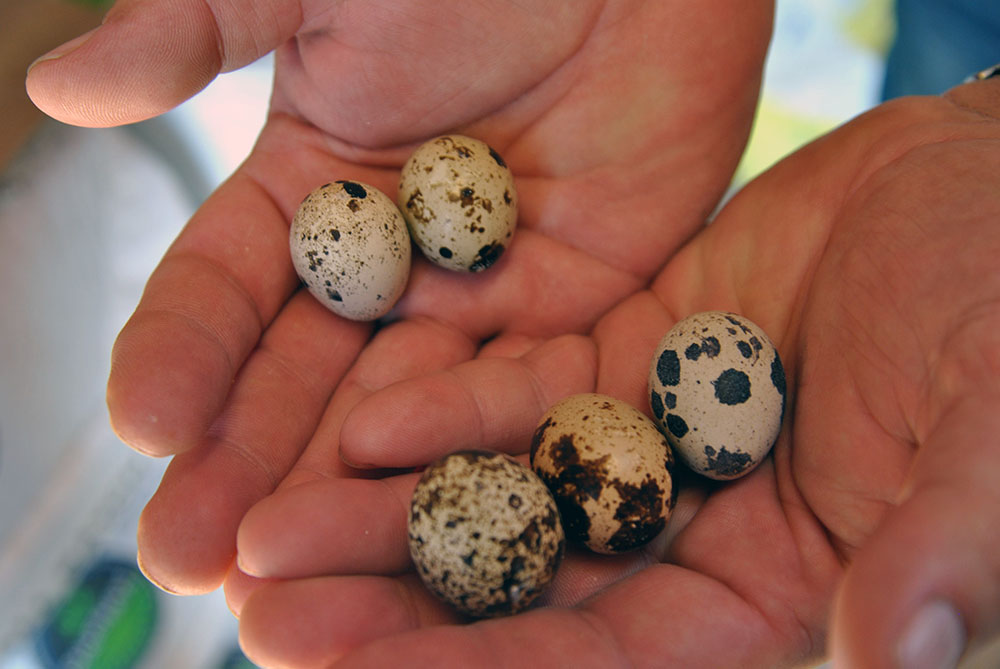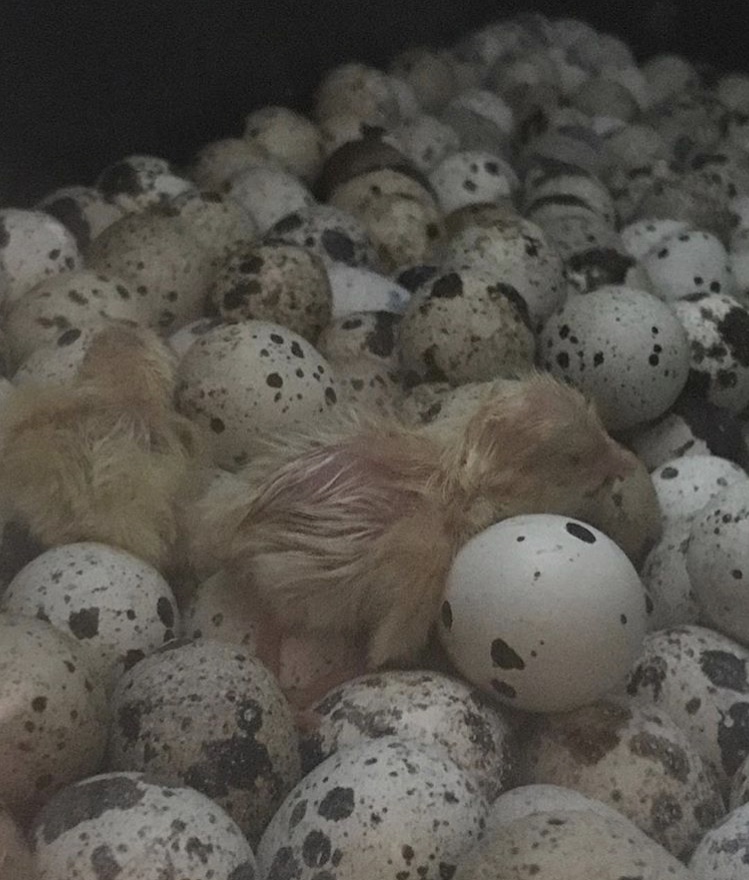How to incubate quail eggs

Quail eggs are eaten around the world, both as street food and in fine cuisine, but they can be used for more than international snacking. By knowing how to incubate quail eggs, farmers that are raising quail for meat or eggs can save time and money while adding an entertaining new activity to their regular farm chores.
“A lot of people do it for fun,” said M Segrist, owner of WoodBottom Quail Farms in Bethel, Ohio.
Not all quail farmers incubate their eggs. Many purchase eggs from breeders, or sell their entire stock of eggs and buy fertilized eggs when they want more quail.
Besides the money you save from hatching your own quail eggs instead of buying new birds or fertilized eggs, Segrist said incubating quail eggs instead of buying quail or eggs from a third party allows you to have more control over the kinds of birds you have in your flock.
“You know where the breed line is coming from,” Segrist said. “You know what size you’re going to get. You can see the birds and do it yourself.”
Preparing to incubate quail eggs
Gather the quail eggs. If you already have laying quail, the eggs can come from your cages. If it is your first time with quail, you can purchase a set of fertilized eggs from another quail farmer.
“You can collect eggs for a couple of weeks before you put them in the incubator,” said Scott Huber, owner of Itty Bitty Farm in Columbia Falls, Maine. “Quails lay about one egg a day. [In the wild] they collect a clutch [a group of eggs] and then start sitting so they will all hatch at the same time.”
Huber explained that Coturnix quail in particular have been bred to remove broodiness, so you can easily take the small speckled eggs out of the bottom of their cages.
“Quail don’t mother,” he explained. “The broodiness and mothering instinct has been bred out of them, so they just drop eggs wherever standing and do not nest.”
Segrist said that determining whether eggs are fertile takes a little bit of practice.
“We put one male for every four to five females,” Segrist said. “Once we start laying, we give them two weeks and then I incubate the eggs to make sure they really are fertile. You can’t really tell [if an egg is fertile] by looking at it.”
Huber warned that sexing quail can be tricky, too.
“Figuring out who’s a girl and boy is very difficult,” he laughed. “We basically just wait for someone to crow [which indicates that the bird is male].”
Huber also said to make sure you have adequate room for your new birds because the process of incubating, hatching and maturing happens so quickly.
“You have to have space for babies to become adults,” he said.
Choosing an incubator
The primary piece of equipment you will need to incubate quail eggs is an incubator.
“[An incubator] can run anywhere from $50 up to thousands of dollars,” Segrist said. “We have a standard cabinet incubator that cost about $800, but I can incubate 1,400 quail eggs at once.”
An incubator’s cost will depend on its size and built-in functionalities. Huber said his incubator, the “Ultimate” HovaBator 1602N incubator kit, cost him about $225 with shipping and handling. It is about the size of a briefcase, enough to incubate a couple dozen eggs at a time, and is equipped with an automatic egg turner.
Ultimately, choosing an incubator will depend on the scale you want to incubate quail eggs.
“There is even a tiny one will hold six eggs that you can keep on a desktop,” Segrist said.
You can even make your own incubator, though it may take some trial and error.
“It can be done,” Segrist said. “I just had a 13-year-old doing a ninth-grade science project that made an incubator with her classmate. She did a wonderful job. People use refrigerators and all kinds of things to be an incubator.”
How to incubate quail eggs
Once you have gathered your eggs and materials, put your eggs in your incubator. The incubator should have a steady temperature between 99.5 and 100.5 degrees Fahrenheit, in the mid-forties percent humidity.
“Eggs work like seeds,” Huber said. “They have to have the right combination of temperature and humidity to hatch, like how with a seed you need the right combination of sunlight and water to germinate.”
The conditions surrounding the incubator are also important.
“It’s also outside the incubator that matters because it fluctuates the temperature and humidity on the inside,” Segrist said. “I know one guy in Ohio who decided to hatch quail eggs in his garage in February. He couldn’t maintain the temperature inside the incubator. We use a room that is insulated and we keep it 70 to 80 degrees [Fahrenheit] surrounding the incubator.”
Eggs should be rotated at least three times a day, either manually or using the incubator’s automatic turner.
“If the eggs don’t turn, the chicks can get stuck in the shells,” Huber explained.
After fourteen days of turning, Segrist said to take the eggs out of turner, mist them with water and raise the humidity for the final days until the eggs hatch.

The types of quail vary slightly in terms of the time they take to hatch. Segrist said that Coturnix quail take 17 days to incubate while bobwhite quail take about 23 days.
“Otherwise they are exactly the same,” Segrist said.
Segrist also said not to get discouraged if some eggs fail to hatch.
“You are going to lose some,” Segrist said. “Not every egg is going to hatch. There is a big difference between the viability of an egg and the fertility of an egg.”

Great article, Sam! If any of your readers have questions about hatching and raising quail I’d be happy to help them out. I can be reached through the Itty Bitty Farm page on facebook – https://www.facebook.com/IBFMaine